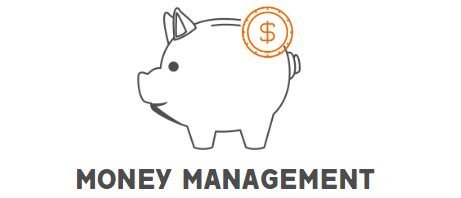Are you tired of feeling overwhelmed by your monthly expenses? Do you find yourself constantly wondering where your money is going? Well, worry no more! In this article, you will discover some simple yet effective tips on how to categorize your monthly expenses. By organizing your spending habits into different categories, you will gain a clearer understanding of your financial situation, allowing you to make smarter and more informed decisions about your money. So, let’s dive in and learn how to take control of your expenses!
1. Basic Categories
Managing your monthly expenses can be overwhelming, but breaking them down into different categories can help you gain better control over your finances. By categorizing your expenses, you can easily identify where your money is going, track your spending patterns, and make necessary adjustments to save more and achieve your financial goals. Let’s take a closer look at the different categories you can use to classify your monthly expenses.
1.1 Housing
The largest chunk of your monthly budget usually goes towards housing expenses. This category includes your rent or mortgage payments, which can significantly vary depending on the location and size of your home. Additionally, you should consider other housing-related costs such as home insurance to protect your property and belongings, property taxes that might be required in certain areas, homeowner association (HOA) fees if applicable, as well as expenses for repairs and maintenance.
1.2 Transportation
Transportation expenses cover any costs associated with getting from one place to another. If you own a car, this category would include car payments, lease payments, or any insurance premiums you pay for your vehicle. Fuel costs, public transportation fares, parking fees, tolls, and vehicle maintenance expenses should also be included in this category. If you frequently use taxi or ride-hailing services, such as Uber or Lyft, allocate a portion of your budget for those expenses as well.
1.3 Food
Food is a necessity, but it’s important to differentiate between groceries, dining out, work lunches, and snacks or beverages when categorizing your food expenses. Groceries typically refer to the amount you spend on groceries and household items when shopping at the supermarket. Dining out includes any meals or drinks you purchase at restaurants or cafes. Work lunches encompass the cost of meals you eat while at work or on business outings. Snacks and beverages cover those items you buy on the go or for enjoyment at home.
1.4 Utilities
Utilities are essential for maintaining a comfortable living environment. This category includes expenses such as electricity, water and sewer services, gas for heating or cooking, internet connectivity, and cable or satellite TV subscriptions. Remember to also allocate a portion of your budget for phone services and any additional services or fees associated with these utilities.
1.5 Entertainment
Entertainment expenses cover the activities and hobbies you enjoy in your free time. This category can include various forms of entertainment such as streaming services like Netflix or Hulu, cable or satellite TV subscriptions, movie tickets, concerts and events, as well as expenses related to books, magazines, or newspapers. Additionally, consider any costs associated with your hobbies and activities, such as sports equipment or club memberships.
1.6 Healthcare
Taking care of your health is crucial, and healthcare expenses can make up a significant portion of your monthly budget. This category includes expenses such as health insurance premiums, copayments and deductibles for doctor visits or medical procedures, prescription medications, over-the-counter medications, and any additional medical treatments or therapies you may require. Additionally, allocate a portion of your budget to health and wellness products, such as vitamins or supplements.
1.7 Education
Education expenses primarily encompass the costs associated with pursuing further knowledge and skills. If you’re currently enrolled in school or have children who are, consider the amount you spend on tuition fees, books and supplies required for your courses, and any online courses or certifications you undertake for personal or professional development. Also, allocate a portion of your budget for any fees associated with professional development, conferences, or workshops.
1.8 Personal Care
Personal care expenses cover the costs of grooming and maintaining your physical appearance. This category includes expenses such as haircuts and hairstyling services, salon or spa services you may indulge in occasionally, skincare products, makeup, and cosmetics you use regularly, as well as any gym or fitness memberships you have to stay in shape and maintain your overall well-being.
1.9 Debt Payments
If you have any outstanding debts, such as credit card debt, student loans, or personal loans, it’s crucial to allocate a portion of your budget towards paying them off. Include the minimum monthly payments required for each debt in this category. By prioritizing debt repayment, you can work towards becoming debt-free and improve your financial situation in the long run.
1.10 Savings
Finally, it’s important to set aside a portion of your monthly income for saving towards various financial goals. This category can include an emergency fund, retirement savings, investments, a college fund for your children’s education, or any specific savings goals you may have, such as a down payment for a house or a dream vacation. Prioritizing savings helps build a strong financial foundation and provides a safety net for future expenses or unforeseen circumstances.
Categorizing your expenses based on these basic categories can provide you with a comprehensive overview of your spending habits and financial priorities. Remember, everyone’s situation is unique, and the percentages allocated to each category may vary depending on your personal circumstances and financial goals. By gaining awareness of your expenses and making adjustments where necessary, you can work towards achieving financial stability and make informed decisions about your money.
